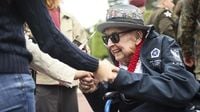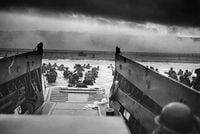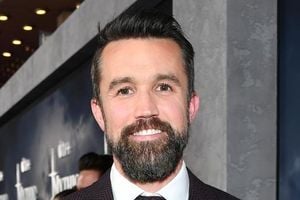On June 6, 2025, the world solemnly marked the 81st anniversary of D-Day, the monumental Allied invasion of Normandy that turned the tide of World War II and set the stage for the liberation of Western Europe from Nazi occupation. Across the Normandy coast and in cities far from the battlefields, veterans, politicians, and thousands of onlookers gathered to honour the bravery and sacrifice of those who stormed the beaches on that fateful day in 1944.
Operation Overlord, as the invasion was codenamed, remains the largest seaborne invasion in history. In the early hours of June 6, 1944, thousands of paratroopers dropped behind enemy lines, setting the stage for the amphibious assault that would follow. Later that morning, over 150,000 troops from the United States, United Kingdom, Canada, and other Allied nations landed on five heavily fortified beaches along a 50-mile stretch of the French coastline: Utah, Omaha, Gold, Juno, and Sword. This colossal military effort involved more than 7,000 ships and landing craft, alongside nearly 11,000 aircraft providing air support.
The stakes were immense. The Allies faced formidable German defences, rough seas, and the constant threat of machine-gun fire, mines, and tank traps. Despite these obstacles, by nightfall, a critical beachhead had been secured, marking the beginning of the end for Nazi Germany’s control over Western Europe. The cost was staggering: approximately 4,414 Allied troops lost their lives on D-Day itself, with thousands more wounded or missing. In the months that followed, during the Battle of Normandy, Allied casualties climbed to 73,000 killed and 153,000 wounded, while German casualties were estimated between 4,000 and 9,000. Tragically, the battle and associated bombings also claimed around 20,000 French civilian lives.
The human stories behind these numbers continue to resonate. Among the veterans who returned to Normandy this year was 101-year-old Harold Terens, a U.S. radio repair technician attached to a P-47 Thunderbolt fighter squadron. Terens, who enlisted in 1942 and helped repair planes returning from France on D-Day, reflected on the enduring value of freedom: "Freedom is everything," he said. "I pray for freedom for the whole world. For the war to end in Ukraine, and Russia, and Sudan and Gaza. I think war is disgusting. Absolutely disgusting." His words echo the sentiment of many who endured the horrors of war yet yearn for peace.
At the American Cemetery in Colleville-sur-Mer, U.S. Defense Secretary Pete Hegseth commemorated the landings alongside veterans, underscoring the enduring alliance between the United States and France. French Minister for the Armed Forces Sébastien Lecornu spoke with deep respect for the veterans, calling them the embodiment of the unique friendship between the two nations forged in those grave moments of history. Hegseth emphasized the need for preparedness in the face of modern threats, stating, "Today the United States and France again rally together to confront such threats. Because we strive for peace, we must prepare for war and hopefully deter it." Though no specific adversaries were named, the message was clear: vigilance remains vital.
The commemorations extended beyond Normandy. In York, England, a service was held at the Memorial Gardens to honour the 81st anniversary. Ken Cooke, a 99-year-old veteran and one of York’s last remaining D-Day participants, laid a wreath at the York Normandy Memorial. Cooke, who landed at Gold Beach as a young private with the Green Howards on June 6, 1944, shared a lighthearted moment after the ceremony: "I’m glad the sun came out." Despite his age, Cooke remains deeply committed to remembrance, telling schoolchildren, "We tell them, we make them promise, that when they grow up, they’ll never go through what we went through." His dedication to ensuring the legacy of sacrifice is never forgotten was echoed by John Avery, a 98-year-old Bevin Boy who also attended the service. Avery, who served as a civic defence messenger during the war, wore the Defence Medal he was awarded 80 years after his wartime efforts.
Another remarkable veteran, Fred Adamson, now 105, shared memories of his service with the 1st/4th Battalion Kings Own Yorkshire Light Infantry. Adamson landed on Gold Beach four days after D-Day and fought in the fierce "Battle of the Bocage," a brutal campaign through the hedgerows of Normandy. He recounted the harrowing experience of wading to shore in waist-deep water and the intense combat that followed. Adamson narrowly escaped death in October 1944 when shrapnel pierced his cigarette cases, saving his life. His story is featured in the newly released book "Normandy 1944 - They Were There - Forty Veterans Remember," a testament to the enduring personal histories of those who fought.
The scale and complexity of the D-Day invasion are almost unfathomable today. Nearly 160,000 Allied troops landed that day, with 73,000 Americans and 83,000 British and Canadian soldiers leading the charge. The operation involved over 2 million personnel from a dozen countries, including medics, pilots, sailors, and support staff. Planning had taken more than a year and included elaborate deception tactics to mislead German forces about the invasion’s timing and location.
Among those who witnessed the invasion firsthand was Tolley Fletcher, now 100 years old. A 19-year-old Navy gunner's mate at the time, Fletcher recalled the treacherous conditions at Utah Beach, where troops had to navigate 3- to 4-foot waves while carrying heavy gear. He described the grim reality of seeing bodies in the water but emphasized the focus on their mission: "We had a job: to escort those troops to the beach." His humility reflects the ethos of many veterans who shunned heroism despite their extraordinary courage.
The legacy of D-Day extends beyond military history. It symbolizes international cooperation, sacrifice, and the relentless pursuit of freedom. As the number of living veterans continues to dwindle—only about 66,000 remain in the United States out of the 16.4 million who served—preserving their stories becomes ever more urgent. Institutions like the National World War II Museum have recorded thousands of personal accounts, ensuring future generations can learn from the past.
In Normandy and beyond, commemorations this year included solemn ceremonies in Sainte-Mère-Église, Carentan, and Utah Beach, as well as vibrant festivals and special events such as the weekend celebration at the RAF Museum in London. These gatherings not only honour those who fought and died but also serve as a powerful reminder of the enduring cost of freedom and the human spirit’s resilience.
As the world reflects on the 81st anniversary of D-Day, the stories of veterans like Harold Terens, Fred Adamson, Ken Cooke, and Tolley Fletcher remind us that history is not just dates and statistics—it is the lived experience of courage, sacrifice, and hope that continues to inspire today’s generations.






